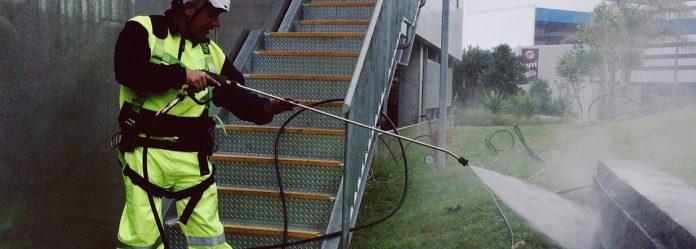Water blasting utilizes highly pressurized water to clean and restore surfaces. When performed correctly, this process effectively removes dirt, mold, paint and stains from structures. However, water blasting requires proper precautions as the pressurized water can damage property and cause injury if misused. Follow these safety best practices when using water blasting services.
Training and Certification
Water blasting operators should be professionally trained and certified. Technicians should have a working knowledge of water pressure physics, blasting techniques, equipment capabilities and safety protocols. Certifications like the National Association of Surface Preparation Contractors (NASP) demonstrate up-to-date training. Always ask providers about operator qualifications.
Proper Protective Equipment
The operator, helpers and bystanders must all wear appropriate protective equipment during water blasting. Thick clothing covers the body against debris dislodged by the pressurized spray. Closed-toe shoes help protect the feet as well. Safety goggles protect eyes, while earplugs dampen noise. Respirable particle masks filter dust and chemicals mobilized during blasting.
Secure Work Zone
The blast zone should be clearly marked off and inaccessible to unauthorized personnel. Signs should indicate water blasting is occurring. Areas below blasting on elevated surfaces need protection too since the spray scatters debris downward. Partial blocking prevents public entry while allowing the operator to exit quickly if needed.
Limit Environmental Impact
When performed outside, water blasting should avoid directing pressurized water into trees or soil areas. This protects against unnecessary soil erosion and damage to plants. Proper drainage controls also keep mobilized debris from entering storm drains, sewers or waterways. Operators should use the minimum blasting pressure and water volume needed for cleaning goals.
Inspect Surfaces Prior
Technicians should examine surfaces before water blasting to identify any existing faults or damage. Some materials with cracks or deterioration cannot withstand high pressure. Inspectors should also check for exterior electrical sources like outlets which must be protected from water. Signs of lead paint or asbestos require containment protocols.
Proper Blasting Angle
The appropriate angle during water blasting avoids forcing water directly into vulnerable areas. Allowing water to flow across surfaces at an indirect angle helps protect surface integrity. Proper distance from the cleaning surface also gives water jet time to fan out rather than concentrating in a damaging stream.
Limit Exposure Time
Technicians should limit the duration of direct high-pressure blasting on any given area. Extended exposure could degrade surfaces or force water into compromised material. Operators should sanitize areas using lower pressure or chemical applications instead of prolonged high-pressure blasting.
When performed correctly following all precautions, water blasting is a safe and effective cleaning method. Reputable providers like Cleaning Doctor Water Blasting understand appropriate operating pressures for different materials. Their qualified technicians work efficiently while protecting property safety and quality.
For the best local water blasting services, search for insured, trained specialists like Cleaning Doctor with a track record of success in your area. They will determine the optimal techniques and precautions to meet your unique cleaning challenges. By partnering with responsible water blasting experts like Cleaning Doctor, you can achieve superior cleaning results safely.
